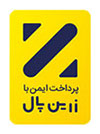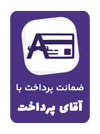Bilingual Glossary
Glossaries
The knowledge and skills that are the forerunners to later success in reading and writing.
Children who have some early literacy skills but are not yet fluent readers.
Synonyms: EFL
A program to teach English to speakers in a non-English speaking setting.
Synonyms: ENL
the term used by the National Board of Professional Teaching Standards in place of ESL or ESOL.
Synonyms: ELL
A national-origin-minority student who is limited-English proficient. This term is often preferred over limited-English-proficient as it highlights accomplishments rather than deficits. English as a Second Language (ESL) and Bilingual are components of ELL.
Source of proficiency level descriptions: Beginning to Advanced: Teachers of English to Speakers of Other Languages (TESOL), Inc., 1997, pp. 20-21.
The term currently used to describe children attending school in the United States who come from homes where a language other than English is spoken.
A program of techniques, methodology, and special curriculum designed to teach ELL students English language skills which may include listening, speaking, reading, writing, study skills, content vocabulary, and cultural orientation. ESL instruction is usually in English with little use of L1.
Develops students’ social and academic English language skills (reading, writing, listening, and speaking) using State Standards. Requires a TESOL (Teachers of English to Students of Other Languages) endorsement to existing license
The process of formulating and sending a message is called expressive language. One way to express language is through speech. Other ways are through sign language, pointing to words and pictures on a communication board, or formulating written messages on a computer screen.

 Persian
Persian  English
English  Arabic
Arabic 



